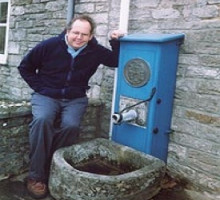
Reviews
This original book both expands upon and goes beyond existing scholarship on the history of forensic science and medicine. It is notable for its treatment of multiple forensic disciplines—ranging from pathology to fingerprinting to DNA identification—and various locations, including colonies, semi-colonial states, and metropoles.
This book is unique in both its theme and treatment. Truly interdisciplinary, yet focused on a largely ignored 'silent witness.' Like history itself, forensics reconstructs, helps 'traces' become truths, and remains engaged in pursuit of rationality and accountability. An excellent example of micro-history on a global canvas!
In a set of pioneering essays that span the globe and reframe the genre, the authors challenge the presumed independence and objectivity of forensic investigations. With its critical attention to technique, authority, and detail, this is a highly original enquiry into the meaning and value of scientific culture.
This edited volume is an important step towards a much-needed global, comparative, and cultural history of forensic science. The chapters convincingly demonstrate how modern forensic science is inextricably connected to race, ethnicity, location, and nationalism, regardless of its claim to objectivity.
This groundbreaking volume embodies a major shift in the historiography of forensic evidence. It traces the conditions under which new scientific techniques came to be used in the detection and prosecution of crime and the recovery of innocence as expert communities emerged in a range of cultures around the globe.
Congratulations to the editors for producing such a diverse collection of fascinating essays on the history of forensic medicine and science. This book illustrates the wide role of forensic practice in different jurisdictions in varying periods of history, and it points the way to further study.
Book Details
Acknowledgments
Introduction: Forensic Facts, the Guts of Rights
Christopher Hamlin
Part I. Evidence and Epistemology
Chapter 1. The Value(s) of Methods: Method Selection in German Forensic Toxicology in
Acknowledgments
Introduction: Forensic Facts, the Guts of Rights
Christopher Hamlin
Part I. Evidence and Epistemology
Chapter 1. The Value(s) of Methods: Method Selection in German Forensic Toxicology in the Second Half of the Nineteenth Century
Marcus B. Carrier
Chapter 2. The Imperial Serologist and Punitive Self-Harm: Bloodstains and Legal Pluralism in British India
Mitra Sharafi
Chapter 3. Handwriting Analysis as a Dynamic Artisanal Science: The Hardless Detective Dynasty and the Forensic Cultures of the British Raj
Projit Bihari Mukharji
Chapter 4. Spatters and Lies: Contrasting Forensic Cultures in the Trials of Sam Sheppard, 1954-66
Ian Burney
Part II. Practices of Power and Policing
Chapter 5. Death and Empire: Medicolegal Investigations and Practice across the British Empire
Jeffrey Jentzen
Chapter 6. Fingerprints and the Politics of Scientific Policing in Early Twentieth-Century Spain
José Ramón Bertomeu Sánchez
Chapter 7. From Bedouin Trackers to Doberman Pinschers: The Rise of Dog Tracking as Forensic Evidence in Palestine
Binyamin Blum
Chapter 8. "DNA Evidence Cannot Lie": Forensic Science, Truth Regimes, and Civic Epistemology in Thai History
Quentin (Trais) Pearson
Part III. Training and Transmitting
Chapter 9. Cleaning Out the Mortuary and the Medicolegal Text: Ambriose Tardieu's Modernizing Enterprise
Bruno Bertherat
Chapter 10. The Strange Science: Tracking and Detection in the Late Nineteenth-Century Punjab
Gagan Preet Singh
Chapter 11. Forensic Knowledge and Forensic Networks in Britain's Empire: The Case of Sydney Smith
Heather Wolffram
Afterword: A Tale of Two Cities? Locating the History of Forensic Science and Medicine in Contemporary Forensic Reform Discourse
Simon A. Cole
List of Contributors
Index







